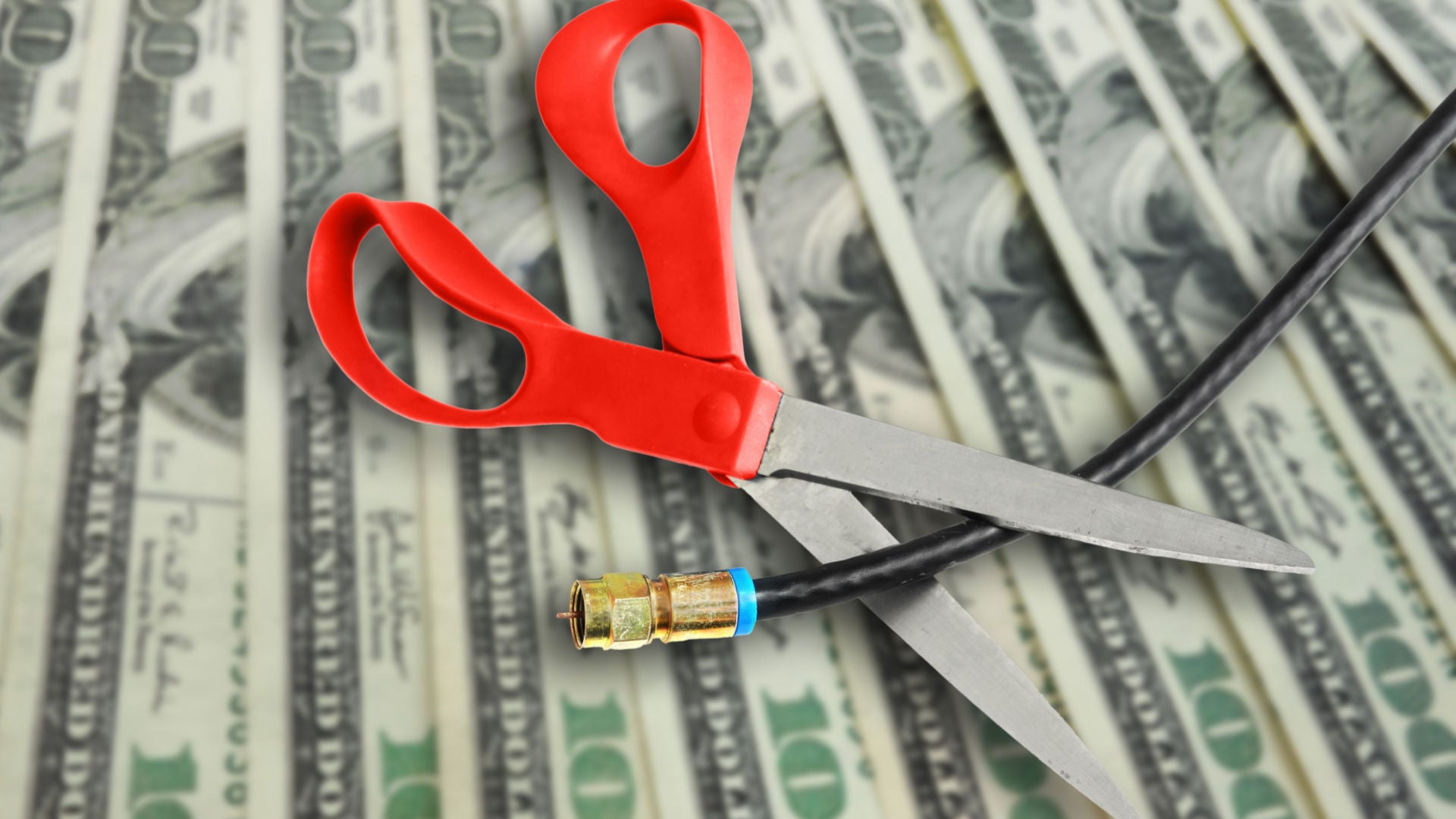
The high costs of cable TV in recent years sent many of us scrambling to cut the cord. Inexpensive live TV streamers were an option, and it seemed like we’d never have to look at cable again. But inevitably, prices on those streaming services started to rise. Now with most live streamers costing $70/month or more, it’s worth looking around to see if we’re actually saving money.
Before we dig in, we should note that every case is different. Your channel needs and the cable companies in your area play a huge factor, so keep that in mind.
Live TV Streaming Costs
| Service | Base Price | Top Cable Channels | Max Channels |
|---|---|---|---|
| DIRECTV STREAM | $79.99 / month | 35 | 220 |
| fuboTV | $91.99 / month | 25 | 213 |
| Hulu Live TV | $76.99 / month | 33 | 105 |
| Philo | $25 / month | 18 | 74 |
| Sling TV | $40 / month | 27 | 49 |
| YouTube TV | $72.99 / month | 32 | 114 |
Hidden Fees
More than 30 states include video streaming services in their sales tax base. In some cases, even cities (like Chicago) have additional fees. In the case of fuboTV, users pay between $8.99 and $10.99 per month for RSN access. Viewers who watch fuboTV with a Roku device pay even more.
Because every service and every location is different, it can be difficult to pin down every hidden fee you may encounter. However, these fees are usually mirrored or exceeded by cable fees.
While each of live TV streaming service is great for its own reasons, we have to remember that we also need an internet plan to receive them.
Internet Service Provider Costs
The cost of your internet package can also vary wildly. Verizon and T-Mobile both offer internet service through their cellular networks for around $50/month, though you can sometimes save if you bundle internet with a phone plan.
Fixed ISPs include AT&T, Comcast, Spectrum, and Viasat. The price you pay will depend on the speed and the number of providers in your area. Some providers include a data cap, some do not. These prices start around $40-50 and scale up quickly. There are also hidden fees and taxes included here.
Another factor may be any modem or router rental. It’s almost always smarter to buy your own equipment, but some service providers may require a proprietary modem you can’t buy from another retailer.
Cable TV Costs
The website CableTV.com analyzed 381 TV packages from 15 providers for a 2022 report. It found that TV-only service can range in price from $20 to $149.99 per month with an average cost of $78.58 per month.
That average for TV alone makes it comparable with most streaming services.
Bundling often lowers the costs associated with each part of the puzzle. That same website estimated the following bundle averages:
- TV and internet: $129.05 per month
- TV, internet, and phone: $144.95 per month
Hidden Fees
Cable companies are absolutely notorious for nickel-and-diming their customers. According to a Consumer Reports study, the cable industry generates an average of nearly $450 per year per customer from company-imposed fees.
Consumer Reports that Comcast customers have seen dramatic increases in their Regional Sports Fee and Broadcast TV Fees. Those combined fees went up more than 600% from 2015-2019.
Unless you’re going over your bill with a fine-tooth comb, you’re probably not noticing 50 cents more here and a dollar more there. But they add up quickly.
Another common trick is the equipment rental fee. With any live streaming service, you’ll get a free cloud DVR. With cable, you may need a box with a built-in DVR, and that carries an equipment fee. There’s also sometimes an upcharge for a box capable of HD video.
How to Decide
Even with all the hidden fees involved, cable TV may sometimes be the better choice. We think streaming TV is a better option for most people, but we’ll outline some factors to consider.
Price Sensitivity: Streaming
Streaming allows you to choose a very narrow bundle of channels. Philo and Sling TV are brilliant for people who want live TV at a fraction of the cost.
Cable will often lure you in with a sweetheart deal, only to increase rates dramatically after a year or so. Sometimes, that locks you into a plan that can be hard to pull out of.
Another point in streaming’s favor: there are so many great free streaming services that mimic traditional TV, so once you start exploring the free streaming ecosystem, you may not find a need to be tied to one package the whole year ‘round.
If you only like watching NBC or CBS, there are very inexpensive ways to watch those channels. A premium subscription to Peacock gets you access to your local NBC affiliate, while the premium Paramount+ subscription does the same for your CBS station. (There are no standalone streaming options for FOX or ABC just yet.)
There may be some advantages to bundling cable and internet (and possibly even phone service). Just remember, what appears like a good deal today may end up costing you more in the long run as fees pile up and promotions expire. These companies want to lock you into a bundle because you’re less likely to make changes, even if the prices escalate. Streaming doesn’t have this problem.
Channel Selection: Streaming
Your ability to tailor your channel lineup is often much more precise with streaming. With so many providers and tiers, it’s much easier to select the channels you need. Use our Service Matchmaker to find the solution that’s right for you.
Cable often locks you into larger packages than you may need or want. The streaming ecosystem also offers channels that may not be easily available on the cable package in your area.
Surround Sound: Cable
Here’s an area where cable usually comes out ahead. If surround sound is important to you, it’s a fairly common feature for cable providers. Streaming services almost never offer surround sound with live TV. Even if they do, you may find yourself in need of specific devices to access that audio stream.
4K: No Advantage
Plenty of streaming services offer 4K. There’s just not enough 4K content right now. NBC and FOX will broadcast some sporting events in 4K. Anyone subscribing to any TV plan that receives FOX can use the FOX Sports App to watch games in 4K. To see NBC sports in 4K, you may need a package like the one offered by fuboTV.
Regardless, neither method of viewing holds an advantage here.
Regional Sports Fan: Depends
In many cases, your cable package is the simplest way to keep up with regional sports since the cable companies often include the regional channels (whether you want them or not). However, there are many cases where streaming may make more sense.
Services like DIRECTV STREAM and fuboTV offer the sometimes hard-to-find Bally Sports Networks. Bally also has its own streaming app if you’d like to follow any teams that appear on those channels.
If you want to follow a team from another city, streaming is definitely the way to go. Services like NBA League Pass and MLB.TV allow you to track your favorite teams if you live outside the team’s normal broadcast area.
Because of regional sports fees and other potential hiccups, be sure to read the fine print to be sure you’re saving money with your chosen solution.
Flexibility: Streaming
You never have to talk to someone on the phone when changing your streaming lineup. Simply go online and add channels, remove them, or cancel altogether. No one will try to talk you out of it. It’s very freeing to be able to cut a service loose without having to wait on hold.
Conclusion
Although the costs of streaming continue to climb, it’s still a better choice than cable for most people. Cable may seem appealing with its promotional offers, but cable tends to carry far more hidden fees than you might encounter with streaming. In some cases, terminating your cable package requires multiple telephone conversations, and you may have to fight the provider if they keep trying to bill you. That’s not a problem with streaming.
The flexibility and choice you get with streaming is hard to beat, and unless you need a sprawling package with 200+ channels, streaming is often easier on the wallet.
Every live streamer offers something great. Philo and Sling TV are perfect for people who want live TV without a huge price tag. Hulu Live TV automatically gives you free Disney+, ESPN+ and Hulu on demand. fuboTV is a great option for sports fans with its excellent channel lineup. DIRECTV STREAM offers four major tiers of channels, including those regional sports networks you may need. YouTube TV has a user-friendly interface and a slight price advantage over some of its peers.
The ultimate advantage of streaming? Choice. While you may only have one or two cable providers in your area, live TV streaming really opens your options for price and channel selection. In the simple economics of supply and demand, streaming offers far more supply than cable, which is why the prices and the services are usually superior to the geographically dependent cable options.
We also can’t understate the importance of not being locked into a contract. You can enjoy a live TV streaming service for one month and cancel and never look back. That’s virtually unheard-of for cable. If you’ve never experienced live streaming TV, it’s worth signing up for a free trial for the services that offer one. Give it a shot and see if streaming is right for you.
Related:
